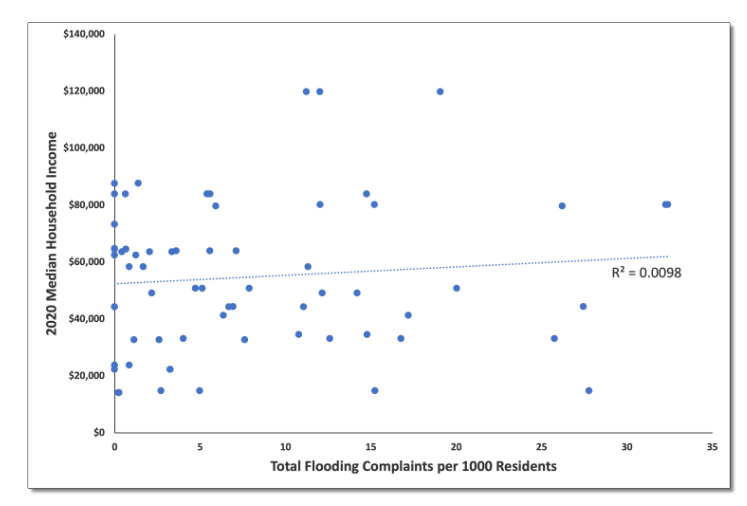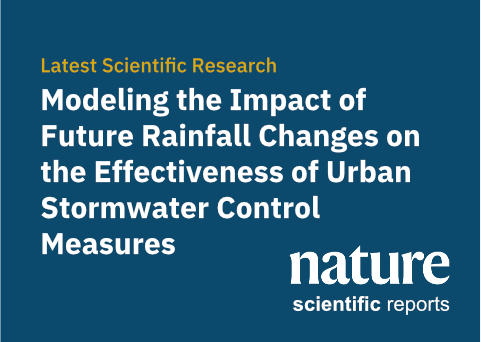
Our science team has recently worked with several municipalities with public reporting systems for residents to report complaints about the stormwater system. Public feedback through 311 and other services can be about illicit discharge incidents, localized flooding, broken infrastructure, or other concerns that the storm sewer system isn’t providing the level of service expected by residents. The public allows stormwater programs to expand their eyes and ears to a more extensive area to know where there are trouble spots without having to inspect every part of the municipality at all times.
The challenge these municipalities face is how to act on citizen observations and feedback efficiently and effectively. What should happen with these public stormwater reports? The data may provide incredible insight into the actual state of the storm sewer system, but often the data are a mess. Most reporting systems take narrative data, so the information is hard to analyze. Plus, the reports are a filtered version of reality, seen through the eyes of a population with usual biases based on different demographics, cultures, and expertise that lead to different expectations and concerns.
3 Tips To Get More From Your Data
Here are three tips that can make it easier to leverage stormwater reporting systems so that your storm sewer system meets the public’s needs.
1. Provide Structure Before or After
Structured data is organized in a way that is easily searchable, sortable, and filterable, making it more efficient to extract valuable insights and make informed decisions. Structured data allows for easier organization, analysis, and interpretation of the information. It also enables data to be easily integrated with other systems and applications, leading to more streamlined processes and improved data quality.
In contrast, unstructured data is challenging to analyze. Take, for example, complaints about flooding. If reports are provided as a description without any pre-built structure, the result will be different people describing the same event using different words: flooding, too much water, wet, drown, submerged, and so on. Even variations of a single word, including misspellings, can trip up data analysis: flood, flooding, floods, flooded, flud, floood, etc.
A simple option is to create a form that asks for the location of the issue and has a few common types available to select without relying just on a narrative description. For stormwater, those could be: flooding, illicit discharge, broken infrastructure, or other. Always include an “other” category to make sure that you capture issues that you haven’t thought about before. You can later adjust your descriptors to include other common complaints if there are many “other” reports.
If leaving the reporting system open-ended is important, spend time categorizing the complaints soon after they come in. Similarly, older data should be given attributes that describe the types of concerns that were reported. You don’t have to capture all of the nuances of the complaints to create a structured dataset that gives meaningful insights.
2. Normalize the Data
Once you have your data in a format that can be analyzed, be thoughtful about any confounding factors. Two prevalent methods for standardizing data summaries are population and geographic area normalization. All else being equal, more people will likely result in more reports. Normalizing the data by determining # of reports per 1000 residents can compensate. The land area of the neighborhood may also matter because more prominent neighborhoods may have more infrastructure. Finally, the combination of population and area, and population density may impact the likelihood that many people will view and report on a single stormwater issue.
There’s no single ‘correct’ way to normalize data. Instead, explore different approaches and use other evidence to bolster the best approach.
3. Test Assumptions
Now is the fun part of turning data into information. Based on your normalized data, are neighborhoods with flooding issues areas with older infrastructure? Are they at lower elevations? Do they have catch basins that need to be cleaned out more often?
One municipality recently tested a hypothesis: whether there was any correlation between flooding complaints and income. They hypothesized that more affluent neighborhoods would have more complaints simply because of a disproportionate sense of entitlement. When we analyzed the data, though, there was no meaningful correlation between median household income and the reports per 1000 residents. Humanity is absolved, at least in this case!

Leveraging Citizen Feedback for Smarter Stormwater Solutions
A few strategic adjustments can significantly empower municipalities to transform public complaints into actionable insights for the public good. By effectively leveraging these insights, municipalities gain valuable data reflecting the real-time conditions of the stormwater system, which is often underreported. This process provides essential feedback for improving infrastructure and actively encourages public participation in the care and maintenance of their community’s stormwater facilities. Engaging the community in this way fosters a sense of ownership and responsibility towards local environmental issues. However, the key to unlocking these benefits lies in the thoughtful management and analysis of the feedback received. It requires a structured approach to organize, interpret, and act upon the data in a way that leads to meaningful improvements. Contact 2NDNATURE for expert assistance in organizing and analyzing this crucial stormwater data and any other related information you might need. Our expertise can help streamline the process, making it easier for municipalities to make informed decisions that benefit the community and the environment.


